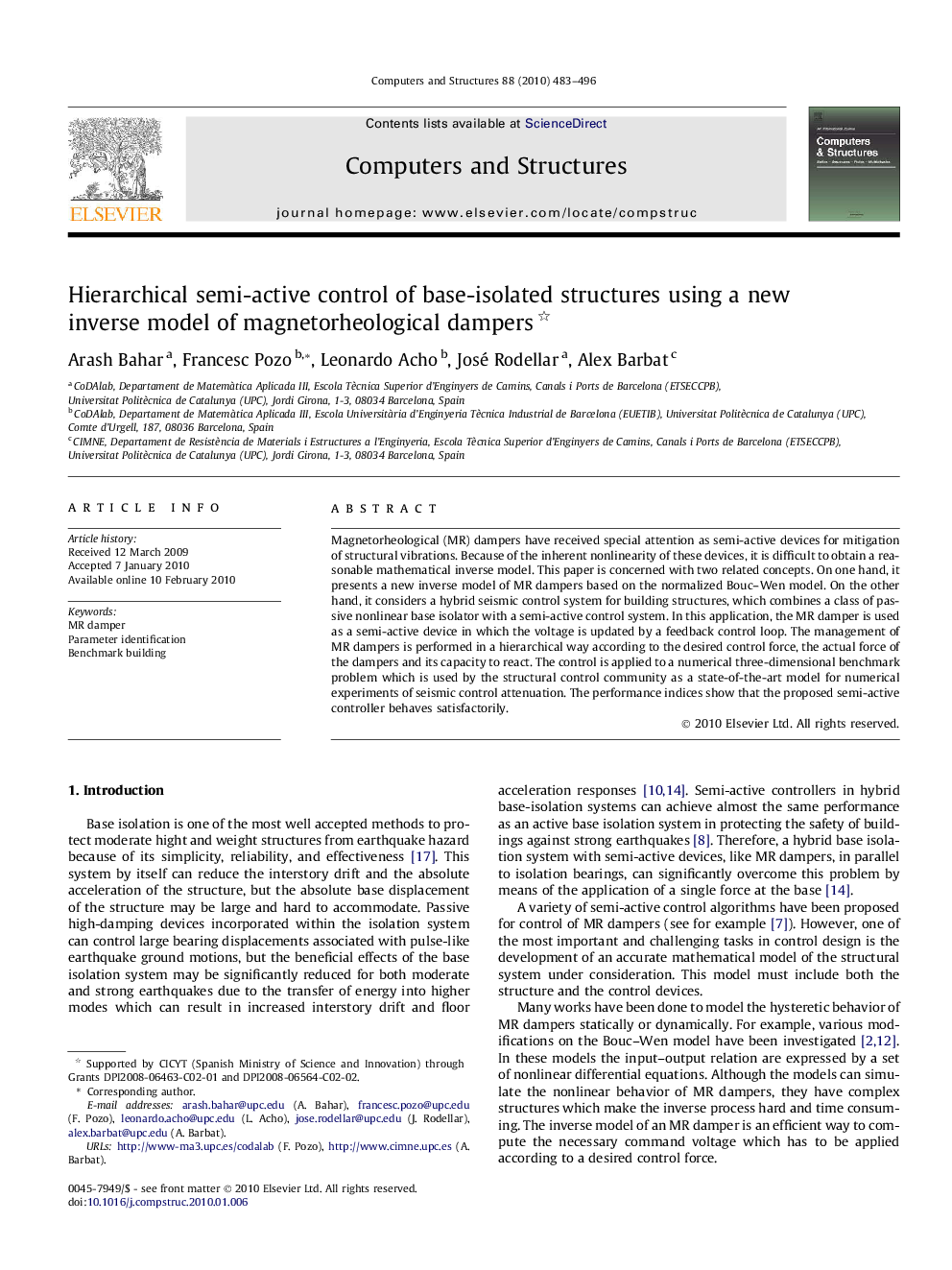| Article ID | Journal | Published Year | Pages | File Type |
|---|---|---|---|---|
| 510614 | Computers & Structures | 2010 | 14 Pages |
Magnetorheological (MR) dampers have received special attention as semi-active devices for mitigation of structural vibrations. Because of the inherent nonlinearity of these devices, it is difficult to obtain a reasonable mathematical inverse model. This paper is concerned with two related concepts. On one hand, it presents a new inverse model of MR dampers based on the normalized Bouc–Wen model. On the other hand, it considers a hybrid seismic control system for building structures, which combines a class of passive nonlinear base isolator with a semi-active control system. In this application, the MR damper is used as a semi-active device in which the voltage is updated by a feedback control loop. The management of MR dampers is performed in a hierarchical way according to the desired control force, the actual force of the dampers and its capacity to react. The control is applied to a numerical three-dimensional benchmark problem which is used by the structural control community as a state-of-the-art model for numerical experiments of seismic control attenuation. The performance indices show that the proposed semi-active controller behaves satisfactorily.
